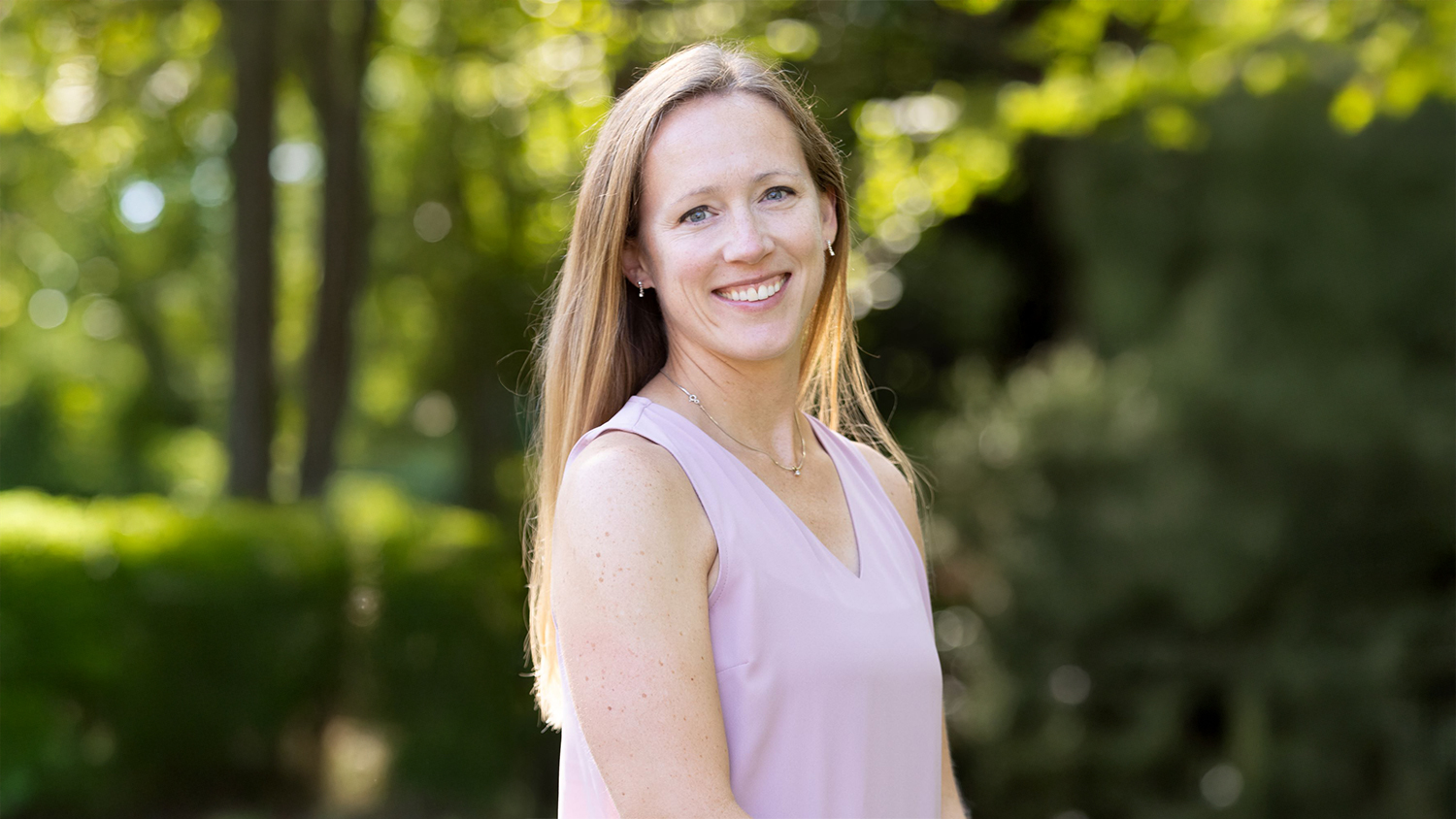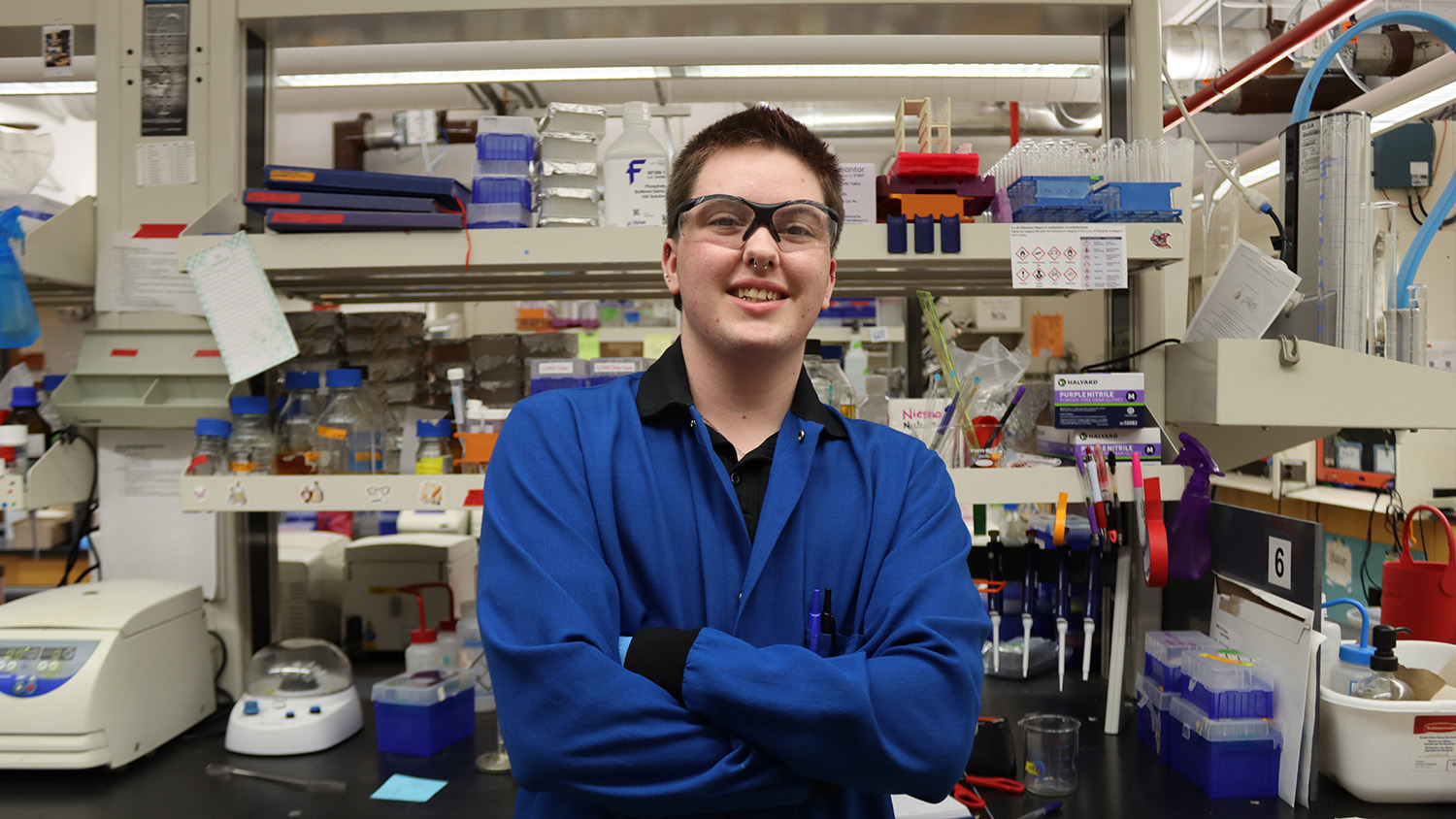Meet NC State’s 2022 NSF GRFP Recipients
Twenty NC State students received financial support for their graduate school research, thanks to the National Science Foundation’s Graduate Research Fellowship Program.

Earlier this year, 20 NC State students earned awards through the National Science Foundation’s Graduate Research Fellowship Program that will help support their graduate school research and other pursuits.
The Graduate Research Fellowship Program provides three years of support for the graduate education of individuals who have demonstrated their potential for significant research achievements in STEM or STEM education. NSF especially encourages women, members of underrepresented minority groups, persons with disabilities, veterans and undergraduate seniors to apply.
The purpose of the awards is to help ensure the vitality and diversity of the scientific and engineering workforce of the United States. The program recognizes and supports outstanding graduate students who are pursuing full-time research-based master’s and doctoral degrees in science, technology, engineering, and mathematics (STEM) or in STEM education.
Students interested in learning more about the National Science Foundation’s Graduate Research Fellowship Program or other prestigious fellowships should contact the University Fellowships Office for information and assistance.
Meet the 2022 Fellows
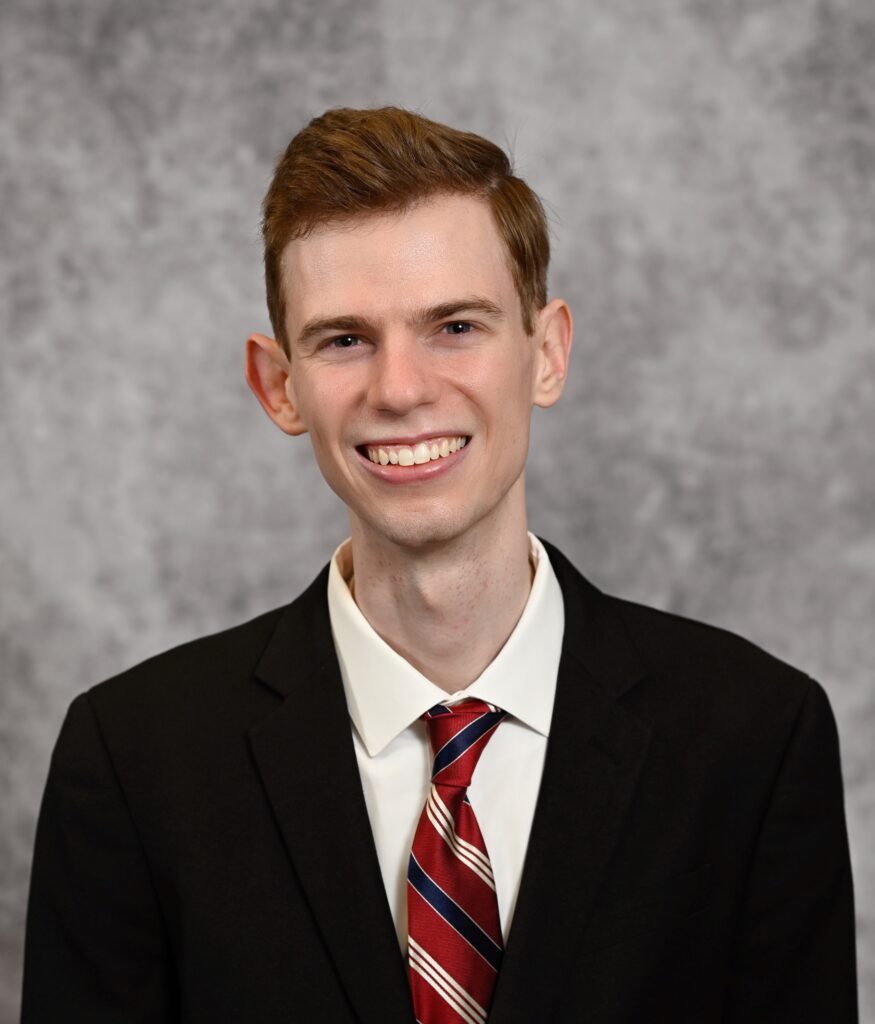
Daniel Haller
Daniel Haller is from Waxhaw, N.C. and earned his undergraduate degree in chemical engineering, with minors in math, English and biotechnology, from NC State in May 2022. As an undergraduate, he was a Park Scholar, founder and president of the Science Olympiad Alumni Organization and oboist for the NC State Woodwind Quintet. He was also a member of the University Honors Program and an Honors Village Fellow.
This fall, Haller enrolled at Rice University to pursue a Ph.D. in systems, synthetic and physical biology. This interdisciplinary program will allow him to pursue research that combines genetic engineering and math modeling to characterize and control the behavior of microbial communities. He hopes to one day become a faculty member and be active in synthetic biology research and teaching.
Haller’s research at NC State focused on engineering probiotic yeast S. boulardii to produce and secrete useful nutrients in the mammalian gut. This yeast is often used to treat gastrointestinal health issues, and now scientists are interested in giving the yeast new properties, such as targeted delivery of drugs and nutrients. As a member of the Crook Lab in the Department of Chemical and Biomolecular Engineering, he engineered S. boulardii to produce beta-carotene, a precursor to Vitamin A. He also identified a transport protein that appears to enable secretion of beta-carotene into the extracellular environment. Along the way, he characterized a set of inducible systems for gene expression in this non-model organism. These tools will help future scientists and engineers create “living drugs” that can colonize the human gut and respond to infection, inflammation and nutrient deficiency.
“The NSF-GRFP will allow me to pursue unique research at the intersection of systems and synthetic biology. I am so grateful to my mentors, instructors and friends for their support throughout my four years at NC State!”
– Daniel Haller
Besides this project, Haller also helped to develop Inducible Directed Evolution, a new strategy for optimizing the function of large genetic pathways in E. coli using viruses. At the University of Texas at Austin, he worked in the Contreras Group to analyze the effect of various types of particulate matter pollution on human lung cells.
“As a chemical engineer at NC State, I learned about how engineers design new systems to solve problems,” Haller said. “Through my research in the Crook Lab, I discovered the field of synthetic biology, which applies engineering to redesign living organisms! I was hooked by the idea of developing living systems to respond to health and sustainability challenges. Synthetic biologists use the tools and parts that nature has produced over millions of years of evolution to create products and therapies that make people’s lives better.”
“The NSF-GRFP will allow me to pursue unique research at the intersection of systems and synthetic biology,” he said. “I am so grateful to my mentors, instructors and friends for their support throughout my four years at NC State!”
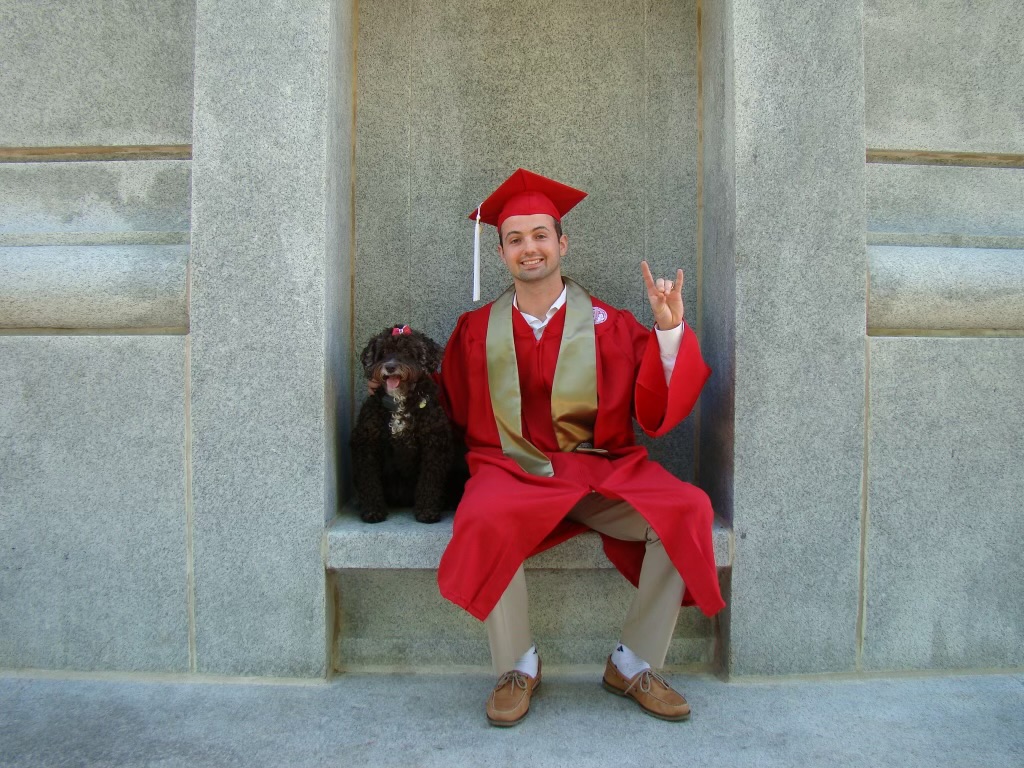
Ryan DeBoskey
Ryan DeBoskey is from Fuquay-Varina, N.C. and earned his bachelor of science degree in mechanical engineering in spring 2022. He is now working towards a master’s degree in aerospace engineering and plans to graduate this December. Outside of his research, DeBoskey was involved in intramural sports and undergraduate research at NC State.
DeBoskey’s graduate research is focused on numerical simulation and experimental diagnostics of advanced hypersonic propulsion and combustion devices. Through collaboration with the U.S. Naval Research Laboratory, he aims to investigate the high-speed combustion multiphysics of solid-fuel ramjet (SFRJ) combustion. During his Ph.D. studies, he will design and construct a fully reacting SFRJ experimental facility to conduct laser diagnostics and high-speed imaging. The goal of this research is to understand the operation of SFRJs in order to extend the operating range to a greater number of military and civilian applications.
I hope to be part of the next generation of hypersonics and commercial space that will inspire others.” – Ryan DeBoskey
“It is a great honor to have been named both a NSF Graduate Research Fellow and NDSEG Fellow,” DeBoskey said. “It is an extreme privilege to be the newest member among a long list of excellent researchers. The fellowship will allow me the time and means to deeply explore the research areas that I love and contribute to society in a much more impactful way.”
DeBoskey’s inspiration for this kind of research comes from his family background.
“My dad was a Navy fighter jet pilot and I grew up around aerospace engineering,” he said. “Whether it was watching my dad’s old flight videos, Top Gun, or every space shuttle launch we could, I was enveloped and enamored by the limits of our technology. I was inspired by all the scientists and researchers that poured their lives into their work and touched the stars. I hope to be part of the next generation of hypersonics and commercial space that will inspire others.”
After finishing his master’s degree in aerospace engineering this fall, he will remain at NC State and begin the Ph.D. program in the spring.
“I will continue working under Dr. Venkat’s amazing research group as well as in conjunction with the U.S. Naval Research Laboratory’s Dr. David Kessler,” he said. “After completing my Ph.D. I would like to go into industry and continue working on the cutting edge of hypersonic propulsion research.”
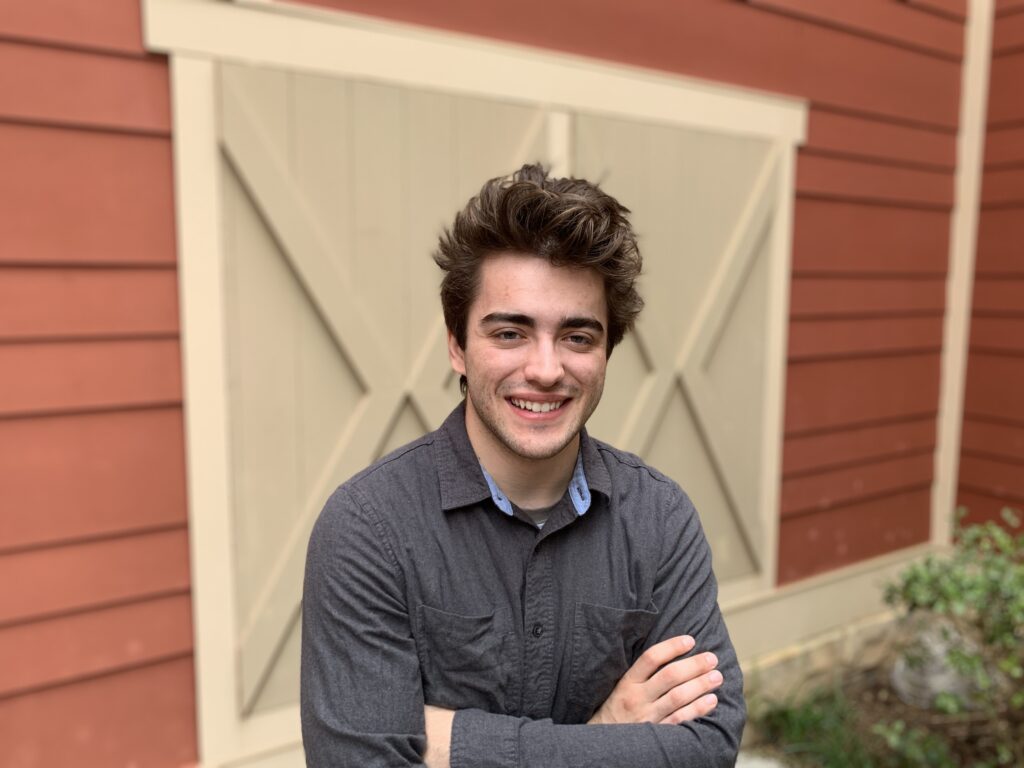
Andrew Connelly
Andrew Connelly is from Raleigh, N.C. and earned undergraduate degrees in physics and math from NC State in spring 2022. He plans to earn a Ph.D. in physics from the University of Maryland, College Park, so that he can start a career in quantum computing research.
As an undergraduate at NC State, Connelly was involved in the Society of Physics Students, Phi Beta Kappa and Sigma Pi Sigma, and he was co-founder of the Quantum Information Club.
For his research, Connelly studies the simulation of lattice gauge theories on quantum computers. Lattice gauge theories are our best computational model of how quantum systems with many particles behave in real life; however, they are extremely computationally expensive, and their simulation on classical computers suffers from a well-known issue called the Monte Carlo Sign Problem. Connelly spends his time looking at how we can efficiently encode these simulations on quantum computing hardware, with the hope that we can extract valuable information without encountering this Sign Problem. Since quantum computers are still in their infancy right now, this equates to developing the algorithms that are conducive to application on more robust quantum computers in the future when they are developed.
“To me, being named an NSF Graduate Research Fellow means that I have more freedom in what I want to study in graduate school,” Connelly said. “Since my funding comes from NSF, I will be able to explore problems that interest me specifically, regardless of how it fits into any potential mentor’s research.”

Cassie Gann-Phillips
Cassie Gann-Phillips is from Asheboro, N.C. and earned a B.S. degree in civil engineering with a minor in design studies from NC State. She is now working on her Ph.D. in the same area, with an anticipated graduation date of May 2025.
Outside of her Ph.D. studies, Gann-Phillips is a graduate teaching assistant and member of Dr. Ashly Cabas’ research laboratory group, GeoQuake. She is also a member of Chi Epsilon, the Geo-Institute Graduate Student Organization, the American Society of Civil Engineers and the Seismological Society of America. In addition, she is a piano instructor for the NC State Musical Empowerment chapter and a member of Friends Campus Ministries.
Gann-Phillips’ geotechnical earthquake engineering research is focused on the attenuation of seismic waves as they travel through soils. She will investigate the connections between the scales at which different attenuation mechanisms affect the dissipation of seismic energy within porous media. Through her research, she would like to fundamentally change the way we think of soil damping by developing an advanced attenuation parameterization for engineering and seismic design guidelines.
“I am looking forward to collaborating with fellow earthquake engineers, both nationally and internationally, through my work.”
Cassie Gann-Phillips
“When I was named as an NSF Graduate Research Fellow, I was overwhelmed with joy and gratitude,” Gann-Phillips said. “I am so grateful to be a part of such a supportive research environment within the Department of Civil, Construction and Environmental Engineering.”
Gann-Phillips said her interest in studying geotechnical engineering stems from her love for Jesus Christ and an interest in building.
“The geotechnical engineering references made when describing a strong foundation of faith within the Bible have always resonated with me, and I am very fortunate to be able to explore the strength of nature’s designs within my coursework and research,” she explained. “Growing up, I enjoyed helping my dad after school on various job sites for his local grading and hauling business where I learned many things about soil, drainage and excavations. I became interested in earthquakes after personally experiencing ground motions during the 2011 Mineral, Virginia, earthquake as a teenager, and I am so glad that I have been able to combine these interests through my earthquake engineering research.”
Gann-Phillips is now continuing her doctoral studies and earthquake engineering research as an NSF Graduate Research Fellow at NC State.
“I am looking forward to collaborating with fellow earthquake engineers, both nationally and internationally, through my work,” she said. “I also am excited to continue my research group’s outreach work for young students interested in civil engineering. After graduation, I hope to be able to teach and mentor students through engineering courses or outreach programs.”
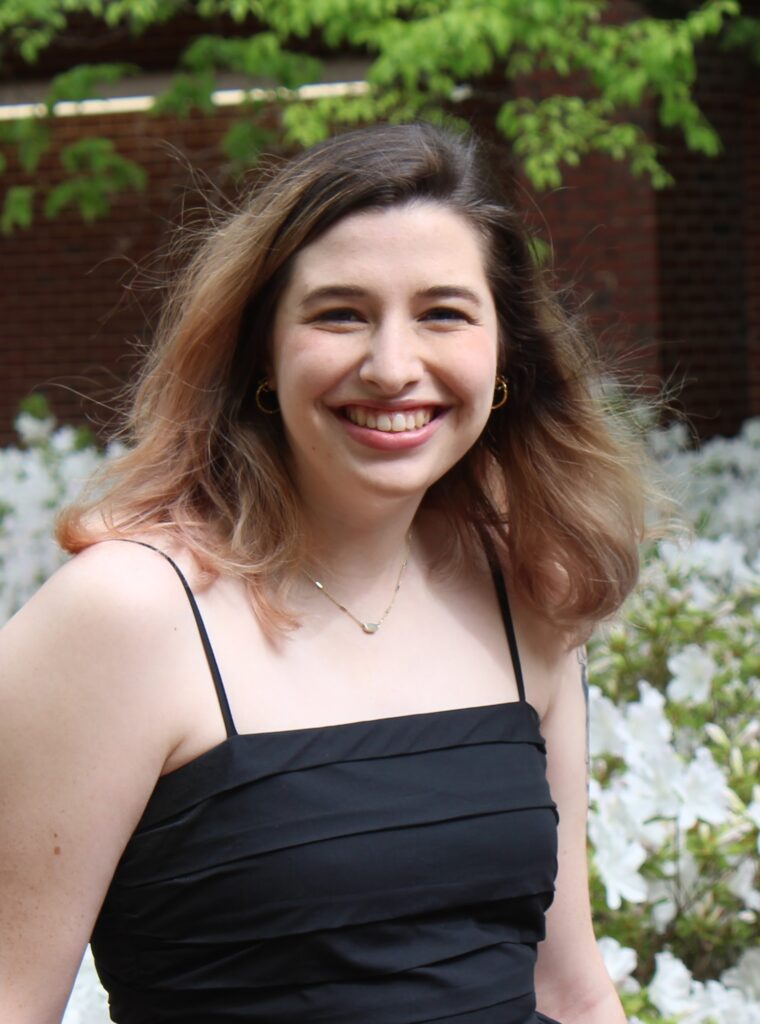
Amber Detwiler
Amber Detwiler is from Fletcher, N.C. and earned undergraduate degrees in biomedical engineering and health science engineering, with minors in tissue engineering, genetics and English, from NC State and the University of North Carolina at Chapel Hill in May 2022. Outside of her studies, she was an executive officer for Girls Engineering Change and was a member of the University Honors and Caldwell Fellows programs.
While she has worked on multiple independent projects, Detwiler’s research as an undergraduate primarily focused on an in vitro model of tissue engineered skin. Generally speaking, tissue engineered constructs are composed of cellular components and a scaffold to support those cells. Her longest project looked at the dermal fibroblast cellular component of tissue engineered skin in an in vitro collagen hydrogel. Little is known about the impact of fibroblast donor cell age and time in culture on the contraction of cellular, hydrogel-based skin grafts. The results of this research show how cellular phenotypes of porcine fibroblasts differ based on donor age and time in culture. This information is beneficial when addressing important inconsistencies in biomanufacturing of bioengineered skin grafts and in vitro models.
“I never thought I would go to graduate school — let alone win this fellowship — until I started doing research at NC State as an undergraduate.”
– Amber Detwiler
Detwiler’s most recent project was on engineering the specialized skin microenvironment that supports hair follicle growth. Skin grafts on the market do not include hair, but hair is very important to the function of healthy skin. This research was done in vitro using a decellularized skin hydrogel seeded with three different cell types, which she was able to successfully layer in an engineered pore structure.
“I am so honored to have been selected as a NSF Graduate Research Fellow among the many qualified and talented people who applied. I never thought I would go to graduate school — let alone win this fellowship — until I started doing research at NC State as an undergraduate,” Detwiler said. “I am so fortunate to have my mentors at NC State who helped me grow as a young scientist and researcher.”
Detwiler’s research began with the Summer Interdisciplinary Research Initiative at the Comparative Medicine Institute as a way of bridging two labs that had not yet worked together: Dr. Piedrahita’s lab in the College of Veterinary Medicine and Dr. Freytes’ REdesign lab in the Department of Biomedical Engineering. All of her research projects have been very interdisciplinary and team science oriented, inspired by the skills and technical abilities of each lab.
This fall, Detwiler started a Ph.D. in biomedical engineering at Duke University. She joined Dr. Nenad Bursac’s lab and is researching skeletal muscle engineering and disease modeling. Long term, she hopes to do research within industry or go into academia.
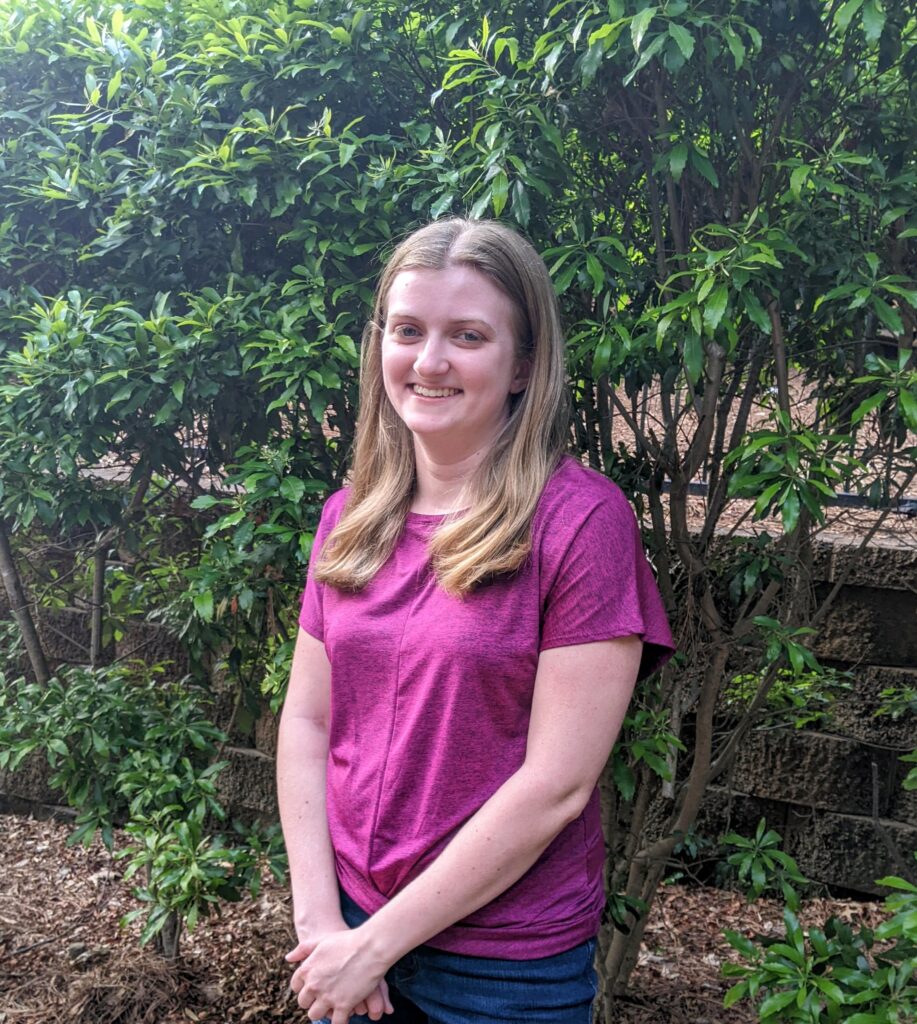
Erin Crites
Erin Crites is from Orlando, Fla. and earned a B.S. in physics from the University of Central Florida in 2020. She is now a Ph.D. student in the physics program at NC State. After earning her Ph.D. in 2025, she plans to pursue an industry position as a research scientist.
Outside of her studies, Crites is an active member and secretary for the Graduate Student Physics Association, where she plans outreach events. She is also a member of the NC State Crafts Center.
For her research, Crites is studying the photothermal heating of nanoparticles in polymers. When nanoparticles are exposed to certain wavelengths of light, they can convert that light into heat. By embedding the nanoparticles in polymers, we can create internal, localized heaters that we can control by simply turning on or off a light. The pockets of heat the nanoparticles create can degrade polymer only in that area, which causes interesting chemistry as the degradation reactions perform differently than if the byproducts of degradation are allowed to escape the material. Crites is looking to understand how this process is different from conventional oven heating and how the resulting byproducts can be used.
Crites is also studying an application of photothermal heating: desalination of water using hydrogels. Hydrogels are a type of polymer that, when put into salt water, absorbs the water and leaves the salt behind. To get the now-fresh water back out of the gel, we can put nanoparticles into the hydrogel, expose the entire system to light, and photothermally heat the system from the inside to evaporate the water out of the hydrogel. After the water is removed, the desalination process can start again. This is a small scale and relatively inexpensive process that could be done anywhere. Crites is looking at the environments that this process works best in, and quantifying the products to better understand how we could implement this as a future desalination technique.
“I have a background in optics, and am particularly fascinated by the possibilities of light-matter interactions,” Crites said. “The photothermal heating process is one of these interactions, but also allows us to control physical properties of a material by just using light and time. There is a lot of interesting science packed into these nanoparticles!
“It is a huge honor to be named an NSF Graduate Research Fellow,” she continued. “Receiving this award gives me the freedom — creatively and financially — to pursue the research questions I am most interested in.”
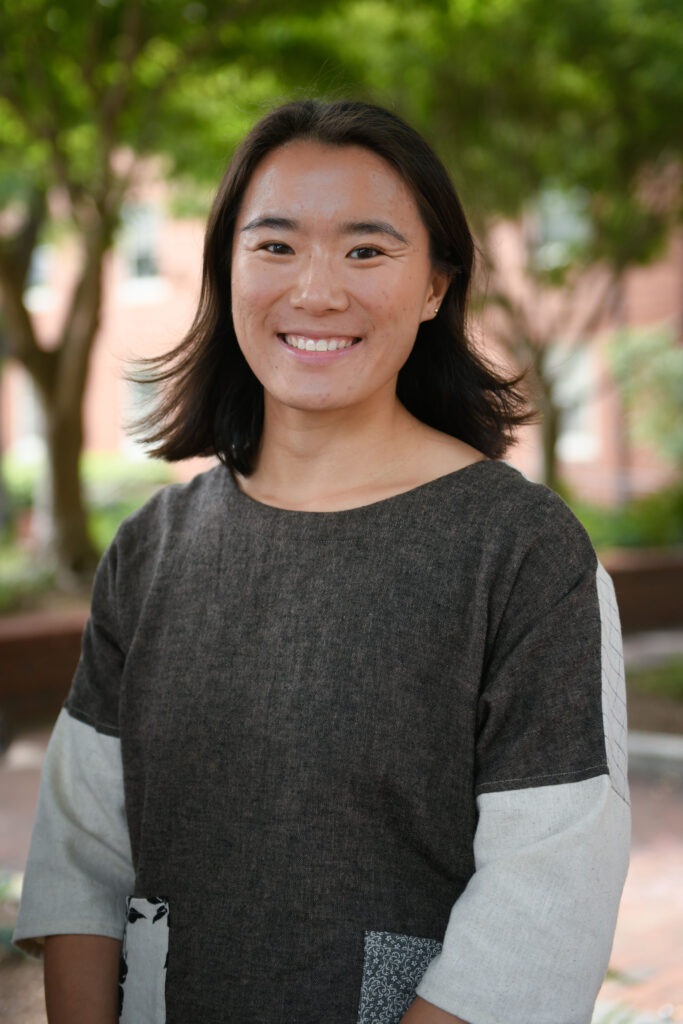
Melina Keighron
Melina Keighron is from Oak Park, Calif. and earned a B.S. degree in biology from Duke University in 2019. She is now a Ph.D. student in the Department of Plant and Microbial Biology at NC State. Following her graduation, she plans to pursue a career in academia or at a natural science museum where she can continue field research but also interact with the general public on a regular basis.
Outside of her studies, Keighron plays on the NC State Women’s Club Ultimate Team and is the social coordinator for the Plant and Microbial Biology Graduate Students Association.
Keighron’s research is on plant-pollinator interactions. She explained that increasing air temperatures under future climate conditions could lead to the decline or loss of heat-sensitive wild bee species; however, we do not understand how quickly plant declines will follow. Plants and pollinators participate in interaction networks, in which some plant species share pollinator species. When a pollinator species is lost, these network structures may shift in ways that buffer or exacerbate the loss of pollination service to a given plant species. In her study, Keighron will use pollinator flight cages at NC State’s Agroecology Farm to experimentally simulate plant-pollinator networks under a warming climate. She will empirically examine how the loss of pollinator species and subsequent network rewiring affects the reproduction of five native North Carolina plant species.
“I’ve always loved going on hikes and being outside,” Keighron said. “However, it’s impossible to do so without noticing the impacts humans have on the local environment. I’m motivated to examine the ways biodiversity and species interactions may change in the future and ways to mitigate the negative effects.”
Keighron called it “an absolute honor” to be named an NSF Graduate Research Fellow.
“I will use this opportunity to investigate the declines in wild bees and the subsequent parallel declines of plant species,” she said. “My dream for this work and for the future is to use art and scientific illustrations to share my research to a broad audience with the aim of increasing awareness about threats to biodiversity.”
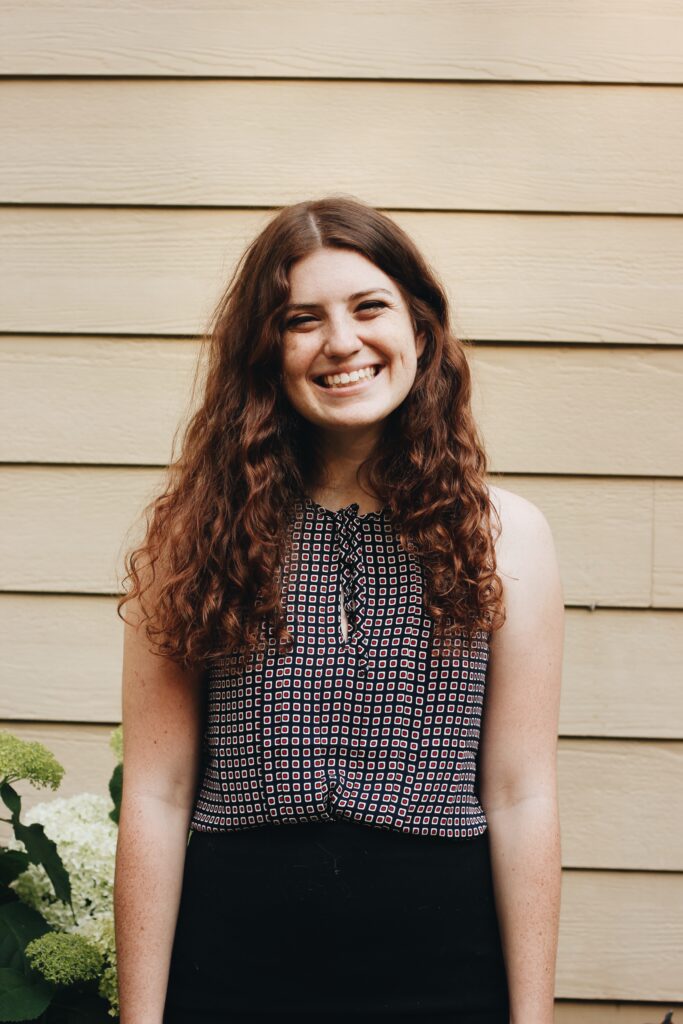
Lindsey Jacobson
Lindsey Jacobson is from Huntersville, N.C. and earned an undergraduate degree in aerospace engineering with a minor industrial engineering from NC State in May 2022. She is now pursuing a Ph.D. in mechanical engineering at NC State while working as a pathways intern within the Space Mission Analysis Branch at NASA Langley Research Center.
In her first two years at NC State, Jacobson served as treasurer of the Engineers’ Council, and as a sophomore she represented NC State as the North Atlantic communications coordinator for the National Association of Engineering Student Councils. In her sophomore year, she also participated in an Alternative Service Break to Rwanda, where she led primary school students through STEM activities to teach them about the engineering design process. The following year, she created a virtual version of the Rwanda experience as an Alternative Service Break Team Leader.
In her junior year, Jacobson served as vice president of Tau Beta Pi (the Engineering Honor Society) and led a service initiative to provide tutoring sessions for introductory engineering classes. She also worked as a University Honors and Scholars Program ambassador throughout her undergraduate education, where she acted as a peer mentor in an introductory honors seminar and led Scholars Forum events.
Outside of NC State, she was an undergraduate research assistant in the System Design Optimization Lab and her research focused on system evolvability and redesign. She published her work at the 2021 International Design Engineering Technical Conferences (IDETC), and her work was also accepted to the 2022 IDETC. Jacobson also worked as a risk management intern for the James Webb Space Telescope Program at NASA Headquarters. During her time at NASA, Jacobson volunteered in support of many STEM outreach events, presenting at Webb’s virtual STEM day and serving as a subject matter expert for the NASA SpaceApps Challenge. She also helped found the NASA Headquarters section of Promoting Agency Cross-Center Connections — a NASA intern organization that spans the entire agency.
For her research, Jacobson studies design decision making and engineering design methodology with a particular focus on system evolvability and redesign. She is interested in how different design tools can be used to model complex systems and how designers can use those tools to make informed design decisions. In previous work, she has investigated the practical challenges associated with redesigning a complex system and the utility of design tools in the redesign process. More recently, she has been investigating how requirements mapping can support strategic decision making in the engineering design process. In the future, she intends to continue studying how engineers can leverage design tools to make better decisions, with an initial focus being on how requirements mapping could support engineers through the conceptual phases of a project.
“I think design and decision making are relevant in all aspects of life, beyond just engineering,” Jacobson said. “People in all disciplines need better methods for analyzing complex problems and systems. This type of analysis allows people to make strategic decisions, which can support them in their own lives and can benefit all of society. Society’s most challenging problems involve complex systems that are difficult to understand and analyze. I am confident that determining better methods of analyzing complex systems will make the world a better place. On another level, I am also hopeful that providing people with the tools to make more informed decisions will empower them to be designers in their own lives, with them having better ability to positively influence their own futures.”
Jacobson called it “an absolute honor” to be named an NSF Graduate Research Fellow.
“I am proud to be part of a cohort recognized not only for their academic achievements, but also for their commitment to positively impact society,” she said. “I am excited for the research opportunities that this fellowship provides to me, and I am so grateful for my professors, mentors, family and friends who have supported me in my academic career.”
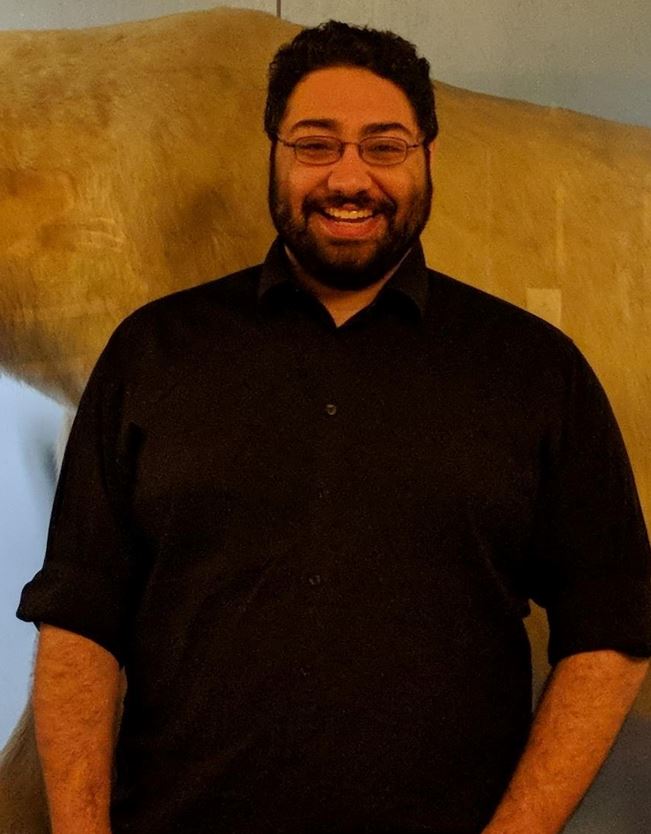
Hisham El-Shaffey
Hisham El-Shaffey is from Rome, Ga. and earned a dual B.S. degree in chemistry and biology, with a minor in geology, from Georgia Southern University in 2010. He is now a Ph.D. student at NC State, and is also a NIH-T32 Chemistry of Life Fellow, an associate member of the Comparative Medicine Institute and a member of the Young Scholars Program.
El-Shaffey is also a member of the Ohata Lab, where he is conducting his research. The Ohata lab leverages atypical solvents to develop novel bioconjugation methods. Bioconjugates are created by attaching chemicals to biomolecules to create molecules with new properties, like combining a toxin with a targeting antibody to create a drug with fewer side effects or attaching enzymes to solid supports to create easily recoverable catalysts. Because biomolecules tend to lose their activity when exposed to traditional organic solvents, bioconjugation reactions have been limited to the fraction of chemical reactions that proceed in water. El-Shaffey is studying methods of overcoming these traditional limitations by leveraging unconventional solvents.
“My current projects focus on the construction of an antibody drug conjugate using reactions that would not be possible in water by employing ionic liquids (a type of organic salt) as the reaction solvent,” he said. “I am looking forward to completing the synthesis and studying the efficacy of this antibody drug conjugate on human cancer cell cultures.”
El-Shaffey said being awarded the NSF Graduate Research Fellowship will allow him the opportunity to engage in STEM outreach and work towards his career goals while pursuing his Ph.D.
“My time in industry helped me realize that pollution is as much a financial loss as it is an environmental tragedy; a ton of chemical waste is also a ton of missed profits,” he said. “I am inspired by the potential impacts of developing more efficient chemical methods and reactions. I am looking forward to returning to the world of industrial chemistry, but hope to stay connected to academia as an adjunct faculty, to allow a venue for STEM outreach and facilitate technological transfer.”
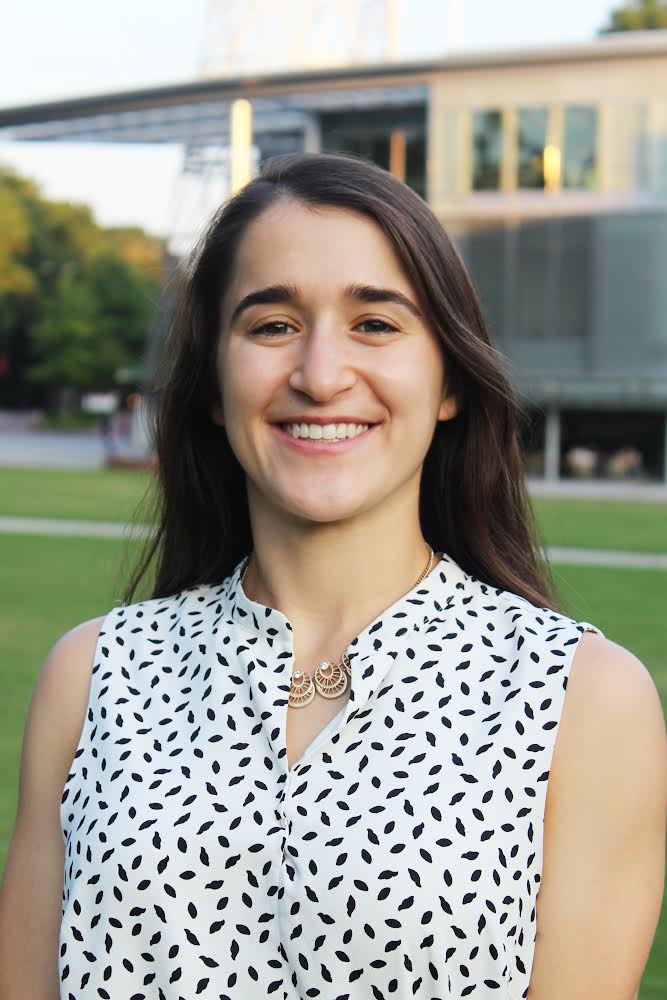
Alexis Voulgaropoulos
Alexis Voulgaropoulos is from Cornelius, N.C. and earned a B.S. in chemical engineering with a minor in biotechnology from NC State in May 2022.
Voulgaropoulos conducted undergraduate research in the Keung Lab from 2018-2022, was an engineering ambassador and Grand Challenges Scholar, served as professional development chair for the American Institute of Chemical Engineers (AIChE), was a biochemistry teaching assistant, and volunteered for Girls Engineering Change.
Voulgaropoulos studies human cerebral organoids, which are in vitro models of the brain derived from pluripotent stem cells. hCOs are attractive for studying human brain development as they capture some complex structures of the brain and bypass ethical concerns from human in vivo studies. Additionally, they can be used for drug screenings and to assess the progression of neurodevelopmental disorders over time.
Normally, cerebral organoids are grown in a spacious, non-confining environment. To better understand the development of these models, Voulgaropoulos looked at how growing the organoids in confined spaces affected their development. The organoids were confined into four microwell shapes: round, C, peanut and butterfly. She saw that there was an increase in gene expression changes when the organoids were confined into the different shaped microwells. The project suggested that spatial factors and geometric confinement of the early organoid growth environment play a role in the brain region specification of cerebral organoids.
“After witnessing friends and family members suffer from neurological diseases, I wanted to conduct neurological research in undergrad and help progress the understanding of neurological diseases,” Voulgaropoulos said. “By further developing lab-based models to study brain development, I feel that I have been able to make an impact that will eventually reduce prevalence of neurological diseases.”
This fall, Voulgaropoulos entered the Ph.D. in chemical engineering program at Stanford University. As climate change, water pollution and other environmental conditions have an effect on people’s health, she hopes to conduct research that impacts both sustainability and current healthcare treatments.
“I feel incredibly grateful to be named an NSF Graduate Research Fellow and cannot thank my mentors enough for their support over the past four years,” she said. “By being an NSF Graduate Research Fellow, I will be able to pursue targeted research in my Ph.D. and increase the bounds of my impact.”

Cameron “Cam” Angulo
Cameron “Cam” Angulo is from Mahopac, N.Y. and earned undergraduate degrees in genetics and biochemistry, with minors in biotechnology and microbiology, from NC State in May 2022.
During her time at NC State, Angulo was a member of the rowing club, briefly the SACNAS chapter at NC State, the Zoology and Genetics clubs, volunteered in research labs and conducted her own independent research projects as a U-Team T-34 grant scholar, SIRI CMI student and a Ronald E. McNair scholar. During her fifth year at NC State, she was a teaching assistant for professor Dave Presutti’s BCH 454 lab course and also continued research with Minorities in Shark Sciences (MISS) off the Florida Atlantic coast. During the summer, she worked in professor Kelly Meiklejohn’s DNA forensics lab at the NC State College of Veterinary Medicine campus for the summer, working on a qPCR assay for forensics use.
Under professor Matthew Fisher at NC State’s Biomedical Partnership Center, Angulo conducted research with the aim of creating a musculoskeletal system model to understand the effect of decellularized ECM on cell differentiation in bone, tendon and muscle using DWNFE (Direct Write Near Field Electrospinning). As an NSF REU intern at Mote Marine Lab under Dr. Cathy Walsh and Dr. Luer, Angulo conducted research on investigating and developing biomarkers in mucus and plasma to determine health impacts of potential exposure to environmental stressors in the Atlantic stingray and Bonnethead Sharks. Her research focus in graduate school will be on the population genetics and immunology of elasmobranch species in their connectivity, global distribution, population health, and the impact of marine protected areas on their conservation and management.
“The NSF GRFP is an incredible opportunity to pursue a lifelong goal of pursuing a research career in marine conservation and policy, while working with organizations like MISS to educate and serve coastal communities and provide support and educational opportunities for future marine biologists.” – Cam Angulo
“The inspiration for my research stems from a passion for marine conservation and management of endangered species fostered by my experiences in childhood and as an undergraduate,” Angulo said. “My parents endlessly encouraged my love for marine biology throughout my childhood, and experiences in visiting my mother’s native coastlines of Puerto Rico also fostered my interests in marine conservation.
“I’ve had incredible guidance and support from my mentors of graduate students and professors in my undergraduate career that have shared their own passion for research, whether in biomedical engineering or marine conservation, which have inspired me to pursue my own research interests with determination and passion,” she continued. “Dr. Luer at the Mote Marine Lab has been conducting research on elasmobranch immunology and developmental biology since the early days of the lab and never failed to share his love for marine conservation, always providing endless papers to read and excitement for research. I hope to conduct research that significantly contributes to management and conservation of endangered species, exemplifying the same passion and work of my mentors.”
Angulo began her Ph.D. program at the University of Hawaiʻi at Manoa and the Hawaiʻi Institute of Marine Biology this fall, and she is hoping to bring the efforts of MISS to Hawaiʻi’s communities and youth. She hopes to continue her research career afterward in a post doctoral position with organizations like NOAA and Mote.
“Being named an NSF Graduate Research Fellow means valuable support and confidence from the NSF as a Ph.D. student,” Angulo said. “The NSF GRFP is an incredible opportunity to pursue a lifelong goal of pursuing a research career in marine conservation and policy, while working with organizations like MISS to educate and serve coastal communities and provide support and educational opportunities for future marine biologists.”
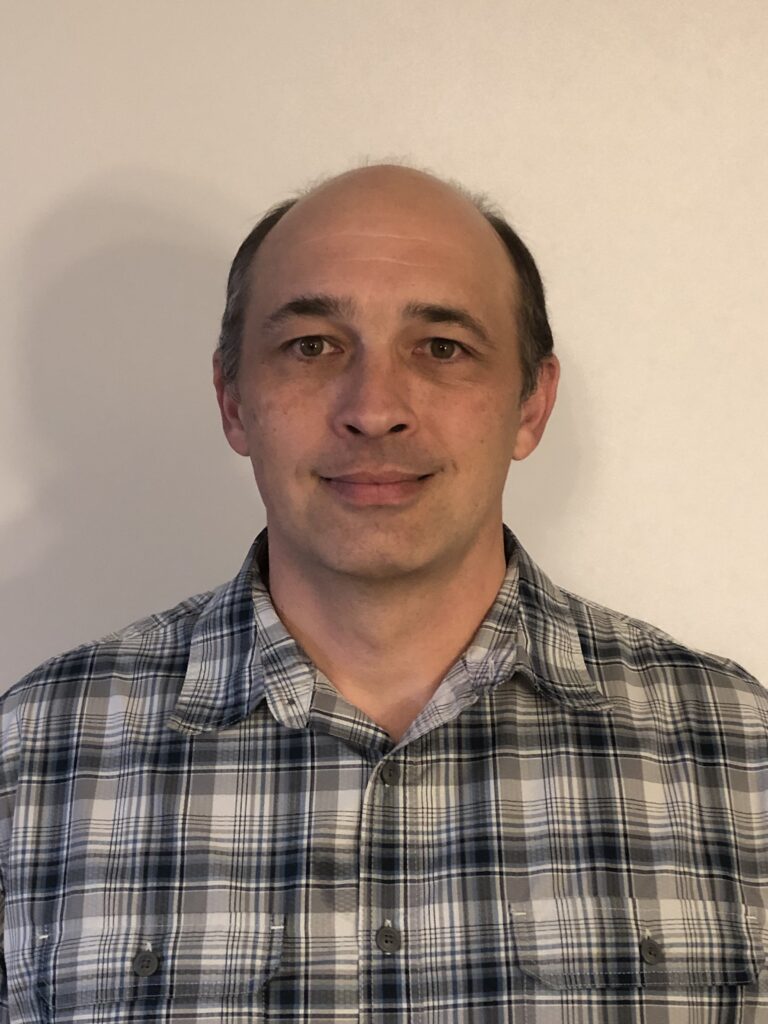
Christopher “Chris” Norcross
Christopher “Chris” Norcross is a retired military veteran originally from Winchester, Tenn. He earned a B.S. in geology with a physics minor from NC State in December 2020, and he is currently a Ph.D. student in earth sciences with an anticipated graduation date of May 2025.
Norcross’ specific research focus is in biogeomorphology, looking at how the North American Beaver (Castor canadensis) affects Piedmont stream systems. He is interested in the connections between the physical landscape, the earth surface processes that modify the landscape and the ecosystems that live on those landscapes. Beavers are recognized by researchers as important ecosystem engineers and a keystone species. As semi-aquatic mammals they are well adapted to life in the water. They are also well known for building dams in stream systems to establish ponds, which they do in order to provide for their own safety from predators and access to food. By building dams, beavers alter the geomorphology, hydrology, biogeochemistry and, ultimately, the ecology of the stream systems where they live.
In general, beaver activity tends to increase local terrestrial water storage, raise water tables, reduce erosion, mitigate downstream flooding, increase channel complexity, promote increased local use of dissolved nutrients, create and maintain wetlands, and increase biological abundance and diversity. In the Piedmont, this is complicated by extensive human land use. Urbanization effects, such as rapid surface runoff directed into stream channels, lead to increased stream power and channel incision, which then impact where and how beavers can survive in the landscape. Norcross studies this topic through a combination of field observations, GIS-based mapping and modeling, and the collection and analysis of hydrologic data.
“In the early spring of 2021, several months before I began graduate school, I had the opportunity to visit a Piedmont stream system in central North Carolina, which had recently lost its long-standing beaver population in connection with expanding residential development,” Norcross said. “Even as a very new geologist, the rapid changes to that stream system were plainly obvious. The loss of the beaver dams had resulted in the loss of both surface and subsurface water storage, an increase in runoff velocity, increased channel incision and erosion, and the conversion of several acres of previously vibrant wetland to a much dryer Piedmont riparian forest. It really grabbed my attention as to how much difference the presence — or loss — of ecosystem engineers makes in a landscape, and I’ve been firmly hooked since then.”
While working towards his Ph.D., Norcross would like to develop a machine learning or AI-based method for identifying beaver habitat in the landscape from remotely sensed imagery. This could serve as a way to rapidly quantify the extent of beaver-affected areas as well as conduct change detection to better understand where beaver habitat is being gained or lost in relation to human land use and development. Ultimately, he would like to help improve the appreciation and awareness for how the actions of ecosystem engineers, including beavers and humans, impacts the landscapes and ecosystems that we all share.
“For me, this fellowship represents an opportunity to pursue a higher level of understanding into my interest in the connections between landscapes and ecosystems, which I then can hopefully share with others in a meaningful way,” he said. “It’s an honor for me to have been selected as a fellow, but also pretty humbling too, when I think about it.”
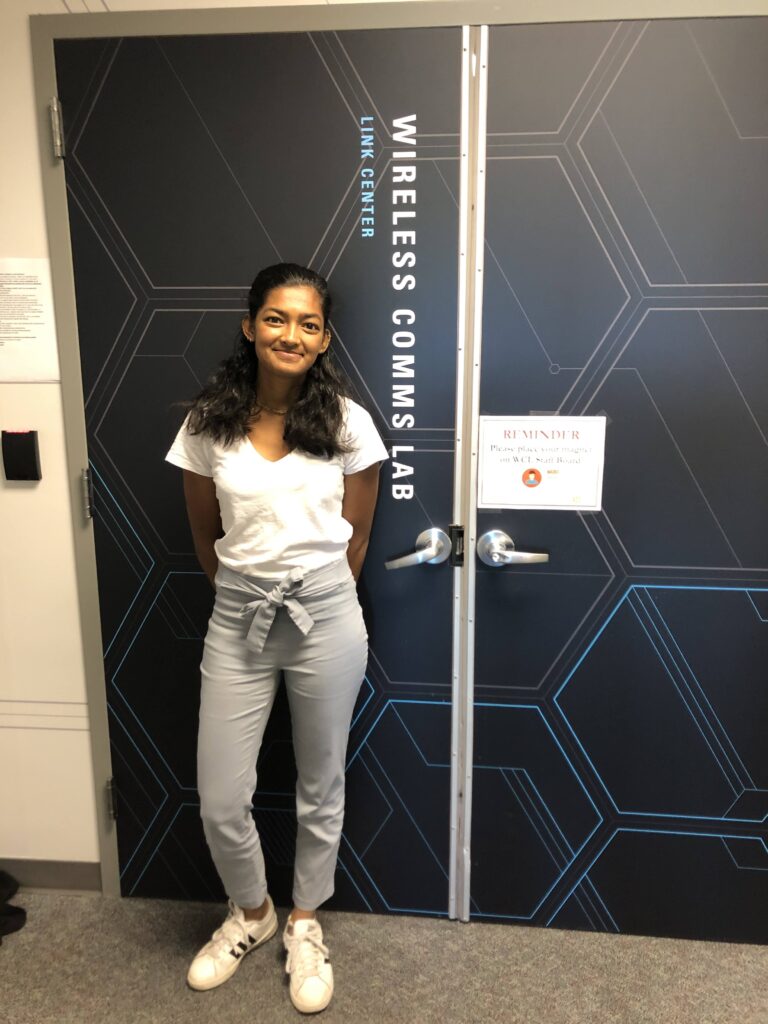
Sucheta Malladi
Sucheta Malladi is from Cary, N.C. and earned a B.A. in electrical engineering from NC State in 2021. She began a Ph.D. in electrical engineering at Johns Hopkins University this fall.
As an undergraduate, Malladi served as vice president of administration for the NC State Student Conduct Board, was a IEEE PES Scholar, worked in the Liquid Rocketry Laboratory, was a mentor for FIRST Robotics Team 2640 and was a teaching assistant for three electrical and computer engineering courses.
During her undergraduate career, Malladi worked with professor Alexandra Duel-Hallen to complete 5G research. The goal of this particular research project was to improve coverage and resilience of mobile networks that utilize mmWave systems by taking advantage of the properties of sub-6GHz frequencies. This allows a signal to be switched to a different tower before it is blocked seamlessly. To tackle the project, they trained various machine learning algorithms to classify and predict signal transitions in tensor containing a list of signal magnitudes. They used neural networks that accounted for temporal dynamic behavior to to efficiently predict future signal transitions.
“I have to thank Dr. Alexandra Duel-Hallen for providing me with the opportunity to conduct research with her and encouraging me to pursue my graduate education in electrical engineering,” Malladi said. “This opportunity was instrumental in helping me conduct research at Johns Hopkins University’s Applied Physics Lab with the Wireless Cyber Capabilities Group. My inspiration to continue research in this field comes from my love for mathematics. I hope to be able to continue innovating to better the lives of others through my work!
“Obtaining the NSF GRFP has enabled me to choose my path with my education,” she added. “It allows me to explore my own research areas of interest and obtain a degree of independence in my research.”
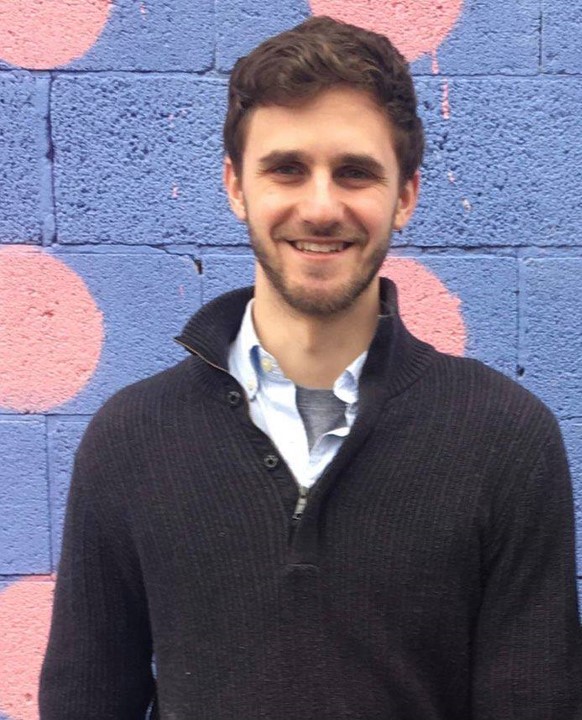
Austin Mituniewicz
Austin Mituniewicz is a Ph.D. student in biomedical engineering from Long Island, N.Y. Outside of the classroom, he serves as merchandise coordinator for the JBME Graduate Student Association.
Mituniewicz researches human impairments to better inform and create biomechanical rehabilitative and assistive interventions. This past year, he analyzed how people with below knee amputations coordinate with passive and powered prostheses while walking. Compared to an individual without amputation, the preliminary results suggest the powered device promotes more similar coordinative behavior at the ankle level than a passive device. However, it appears the robotic assistance on its own does not prompt more normative behavior further up the kinematic chain.
This finding supports the need for a biarticular prosthesis, like the one Mituniewicz and his lab colleagues are currently developing. Their device uses pneumatic actuators that span from the knee to the ankle, mechanically coupling the joints together. Mituniewicz and his advisor, Distinguished Jackson Family Professor Helen Huang, hypothesize that this constraint will not only enforce more normative lower extremity coordination, but may also improve human-machine synergy. Crossing the intact knee will transmit the device’s force through the wearer’s muscles to their nervous system. This has the potential to provide the user with proprioceptive feedback concerning their artificial body segments.
In addition, Mituniewicz is also assisting a project led by Huang and Michael Lewek, a professor in the University of North Carolina at Chapel Hill’s School of Physical Therapy, that focuses on stroke survivors. This population has limited neuromuscular control of their paretic side, which often leads to trips and subsequent falls. They aim to address this by developing an algorithm that predicts trips before they occur using the kinematics from an individual’s previous steps. Upon prediction of a possible trip, a wearable device will provide non-invasive electrical stimulation to the individual’s paretic leg muscles, causing stronger muscle contractions. The supplemental muscle force would then dampen the predicted source and prevent the trip from occurring.
“I was immediately interested when I first met Dr. Huang and she expressed her desire to build a biarticular prosthesis that mimicked the function of a natural gastrocnemius by replicating its form,” Mituniewicz said. “We later agreed that I should use this idea for my NSF GRFP application’s research statement. While investigating how the device’s performance would be analyzed, I first came across the coordination technique that I continue to use throughout the year. This method views human locomotion through the lens of dynamical systems theory. I believe both the biarticular device and the coordination analysis fit extremely well into what I believe is my niche as the bridge between ‘bio’ and ‘mechanics.’”
After completing his Ph.D., Mituniewicz hopes to further his academic career and become a university professor.
“My NSF Graduate Research Fellowship belongs equally to my grandma, Helen, and is a fitting tribute to her belief in education,” he said. “She encouraged my father to become the first in the family with a college degree, which he obtained here at North Carolina State. In addition to the immense love that she invested in me throughout my life, I drew strength across the last year, especially during my fellowship application, from the picture of her that I keep on my desk at Centennial Campus.”
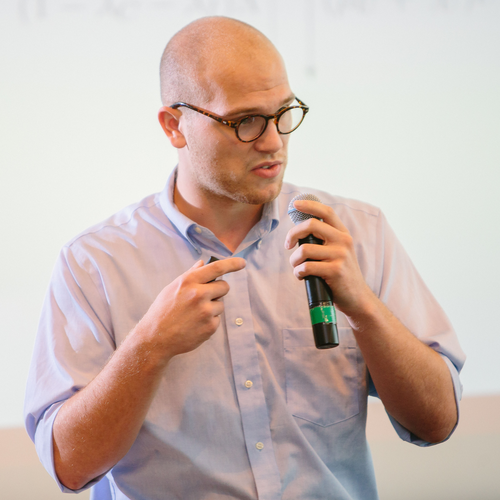
Cole Butler
Cole Butler is from Auburn, Maine and is working towards a Ph.D. in biomathematics from NC State. Outside of the classroom, he is president of the Biomathematics Graduate Student Association, a member of the Society for Mathematical Biology, and a member and treasurer of the SIAM chapter at NC State. Off campus, he is a scholar in the Genetics and Genomics Academy and has helped organize the Triangle Competition in Math Modeling and programs providing STEM opportunities to disadvantaged high school students.
In his research, Butler uses mathematics to answer questions related to biology and ecology. His current interests are in modeling genetic biocontrol methods such as gene drives. Gene drives are a technology that allows researchers to spread a gene into a target population. These might include vectors of dangerous human diseases or agricultural pests. The former category includes mosquitoes, which transmit diseases responsible for the death of nearly a million people each year.
Using gene drives, scientists can spread a harmful gene through specific mosquito populations. As a result, the mosquito populations are reduced as is the transmission of such diseases as malaria and dengue — completely without use of insecticides. However, we are not quite at the stage of wild releases, so scientists must rely on mathematical and computational tools to develop and better understand this technology. This is where Butler comes in.
“I grew up getting bit by mosquitoes in the Maine woods,” Butler explained. “I also happened to have a thing for math and, thanks to authors like Richard Preston, I fell into reading a fair bit into infectious diseases. Biomathematics allowed me to combine these qualities—I love to hate mosquitoes.”
Butler wants to better understand the people and communities that this technology would most benefit. After graduate school, he intends to develop connections, share his message with a wider audience and help cultivate further work.
“Receiving this fellowship has given me the confidence to undertake more ambitious goals and inspired me to develop my ideas further,” Butler said. “I am extremely grateful for the combined support of the Biomathematics Graduate Program and the Genetics and Genomics Academy.”
